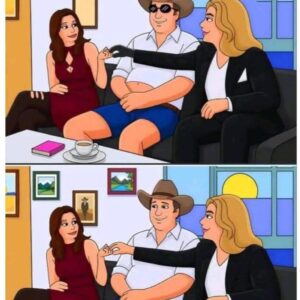Lila was the only child in a tense courtroom. Her parents sat on opposite sides—her mother teary, her father trembling. But Lila’s focus was on Charlie, the golden retriever service dog sitting quietly in the aisle. Charlie wasn’t just a dog.
He was her lifeline—the only being she’d connected with since the bruises faded but her silence remained. Therapy hadn’t helped. Charlie had. Judge Holloway, known for her strictness, addressed Lila gently. “You don’t have to speak. You can nod or signal.” Lila didn’t move—until she drew a small circle in the air with her pinky. Charlie stood, walked to the witness stand, and sat. Lila tapped her chest twice. Charlie barked once.
The courtroom froze.
The psychologist stepped forward. “That’s her signal. She’s ready to tell the truth.” She handed the judge an envelope Lila had given her in advance—“If Charlie barks, give this to the judge.”
Inside was a drawing: a frightened Lila cowering as an angry man loomed. Charlie stood barking between them. The message read:
“He says he loves me, but I’m only safe when he’s not near.”
The father protested, but the judge silenced him. Then, softly, Lila spoke:
“Charlie knows who keeps me safe. He remembers when I couldn’t.”
The courtroom was stunned. Judge Holloway looked at Lila and Charlie.
“You’ve said more in one signal than most say in a thousand words.”
She granted custody to the mother immediately.
Six months later, Lila sat in a sunny park, sketching, Charlie by her side.
A boy asked, “Can I pet your dog?”
Lila smiled. “Ask him first.” She tapped her chest twice.
Charlie barked happily.
Lila laughed—for real this time. The bridge was working.





